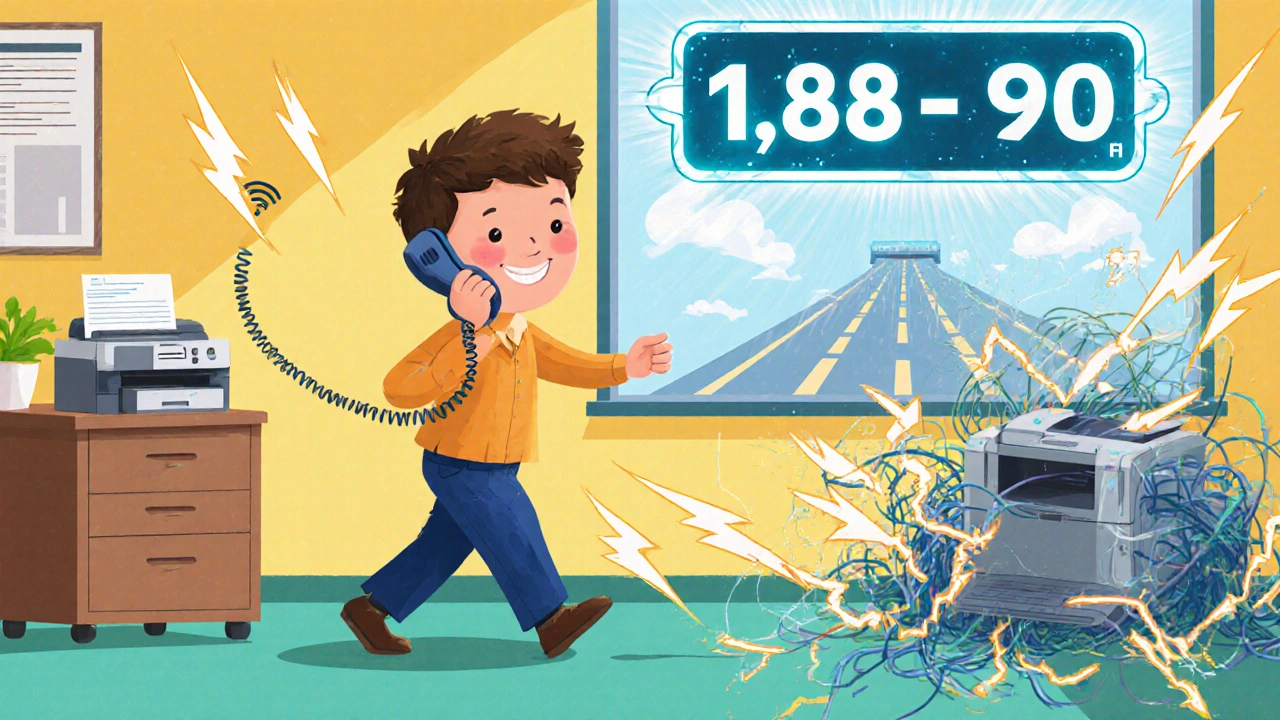Cordless SIP Phones: What They Are and How They Work for Home and Business
When you think of a phone system, you might picture a corded desk phone plugged into a wall. But cordless SIP phones, wireless handsets that connect to your internet instead of phone lines, using the Session Initiation Protocol to make calls. Also known as wireless VoIP phones, they let you walk around your office or home while staying on a call—no base station tethering, no tangled cords. These aren’t just fancy gadgets. They’re the new standard for teams that move, hybrid workers, and small businesses cutting phone bills.
Cordless SIP phones work by connecting to your Wi-Fi or Ethernet, then talking directly to your VoIP provider or PBX over the internet. Unlike old DECT phones that needed a proprietary base, these use standard SIP protocols, which means they can work with nearly any VoIP service—Nextiva, RingCentral, Ooma, or even a self-hosted server. You plug one in, register it, and it’s ready. No phone line. No monthly fees for extra lines. Just a solid internet connection and a handset that charges like your smartphone.
What makes them different from regular VoIP desk phones? Mobility. You can take a call from your desk to the kitchen, the warehouse floor, or even outside while you wait for a delivery. Many models support multiple lines, Bluetooth pairing for headsets, and even integration with your CRM. And because they’re SIP-based, they play nice with other smart devices—like SIP intercoms, door phones, and wallboards—making them part of a full unified communications setup. You don’t need a big IT team to manage them, either. Most can be configured through a web interface in minutes.
But not all cordless SIP phones are built the same. Some have poor battery life. Others drop calls when you walk past the microwave. A few don’t support encryption, leaving your conversations open. That’s why choosing the right one matters. Look for models with WPA3 security, HD voice codecs like Opus, and support for 802.11ac or Wi-Fi 6. If you’re using them in a noisy warehouse or open office, check for noise-canceling mics and loud speakers. And always test range before buying—some handsets lose signal after 50 feet.
These phones aren’t just for call centers. A freelance designer uses one to take client calls while working from the patio. A small medical clinic uses them so nurses can answer questions while moving between rooms. A remote team in three time zones uses them to stay connected without paying for international numbers. They’re simple, affordable, and flexible—exactly what modern communication needs.
Below, you’ll find real-world guides on how to set them up, which models actually last, how to secure them, and how they fit into bigger systems like VoIP networks, VLANs, and CRM integrations. No fluff. Just what works.
